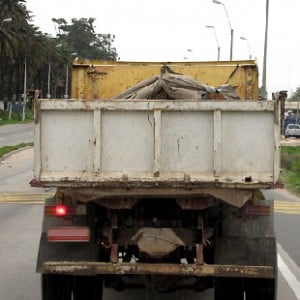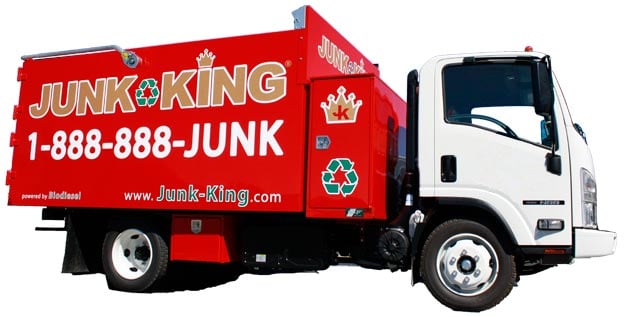
It’s always a good practice to keep construction material out of a landfill, if possible, and there are a number of other good reasons to consider construction debris recycling. Today it is possible to see a wide variety of waste materials effectively re-used and re-purposed. For example, the durability and potential for reuse of concrete rubble makes it a great candidate for recycling.
Three Great Reasons to “Go Green” With Construction Debris Recycling
Recycling requires some advance planning, but the benefits - both immediate and long-term - are well worth it. Much of what comes off of a construction site can be reused. In fact, when deconstruction on a site is involved, there can be a wealth of recyclable material that would otherwise be treated as mere disposable debris.
There are three main benefits for contractors who are considering construction debris recycling:
1. Reduced costs of removing and hauling
2. Elimination of high landfill fees
3. Contributes to the production of lower-cost recycled aggregate products
And aside from the economics of choosing a firm to take your construction debris to a recycling plant, there are a variety of benefits in recycling materials rather than dumping them or burying them in a landfill. Waste concrete is a great example. The benefits of recycling concrete include:
• Keeping concrete debris out of landfills saves landfill space
• Using recycled material as gravel reduces the need for gravel mining
• Using recycled concrete as the base material for roadways reduces the pollution involved in trucking material
• Construction debris can be anything from concrete and flooring tiles to fixtures and doors. Other materials like wood, metal, bricks and glass also count. Even the trees, stumps and earth collected from clearing a site falls into this category of waste.
Most of the common C&D materials can be recycled including concrete, porcelain, rigid plastics, tile, lumber, metals, masonry, plastic, rock, carpet, insulation and more. What can actually be recycled at your local facilities may vary depending on location and local regulations.
How Your Construction Debris Can Become Part of the Solution
The goal with every recycling program is to retain as much value as possible by turning waste materials into new resources.
Here are a few examples of what can be reused:
• Cardboard, paper, plastics and metals are converted into new goods
• Clean wood can be processed into mulch or biomass fuel
• Dirt, rock and sand are routinely used as Alternative Daily Cover (ADC) in landfills
• Crushed concrete is converted into gravel or dry aggregate for new concrete
• Inert materials can be used as road base
Using Building Deconstruction as a Recycling Strategy
Deconstruction refers to the practice of carefully dismantling pieces of a home or building in order to salvage the valuable building materials. Commonly deconstructed items include doors, windows, flooring, ceiling tile, countertops, cabinets, light and plumbing fixtures, molding, joint fixtures, roofing, blinds and shades.
There are a number of environmental benefits to deconstruction and building debris accounts for one-third of the solid waste generated in the United States. In fact, statistics show that the demolition of buildings in the United States produces almost 125,000,000 tons of debris each year.
One source has estimated that a year’s amount of building debris is enough to build a wall 30 feet high and 30 feet thick around the entire coast of the continental United States. Keeping as much of this reusable building material out of landfills as possible really does make a significant impact on the environment.
As deconstructed materials are recycled and reused, the need for raw materials in new building projects is also decreased. In addition to being great for the environment, deconstruction can also mean cash in your pocket since many of the materials you donate can translate into a tax write-off.
And since getting it off-site and hauled away is still a potentially costly and time-consuming proposition if you choose to do it yourself, finding the right professional hauling firm is critical.
Let the Professionals Help You With Recycling Construction Debris
Part of the beauty of outsourcing the pick-up and disposing of your construction waste is the convenience. But, just as important, is the very real impact that having your debris recycled and reused. California is one of the leading states in the processing and reuse of concrete and other waste building materials, and Sonoma County contractors are a big part of that movement.
Junk King provides an efficient, safe and eco-friendly construction waste disposal service so you don’t need to worry about the pick up or disposal of the debris after your project is complete. Whether you need our services several times during a construction project or just once after it is complete, our hauling professionals will ensure that the construction debris is out of your way so that you can get on with the job.
Our team specializes in construction debris removal. We can be at your facility in mere minutes, so call us today! Our crew is fully insured and well-trained, so you can trust them to get rid of your unwanted items in a professional and courteous fashion. One of the best things about hiring Junk King is that we recycle a much of the material we pick-up. This is proof of our commitment to being an eco-friendly removal service. If you have questions about what we do or what we believe, give us a call at (707) 744-4254.

